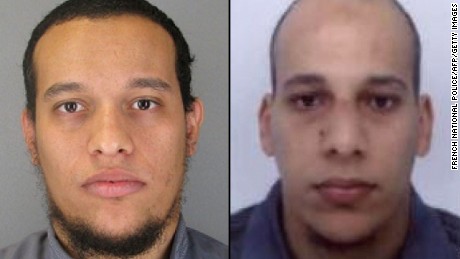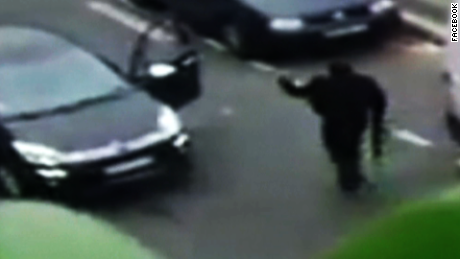Story highlights
- Videos show speed, preparation by terrorists in Paris attack, Mark Hertling says
- Attack's timing indicates intelligence and route planning on part of terror team, Hertling says
- Hertling calls it a follow-on attack after earlier firebombing on Charlie Hebdo failed
Editor's note: Retired Lt. Gen. Mark Hertling, former commander of U.S. Army Europe, served in the Army for more than 37 years and spent more than three years in Iraq. He was the director for war plans on the Joint Staff on September 11 and has extensive experience in strategy development and implementation. He is a CNN military analyst. The opinions expressed in this commentary are solely those of the author.
(CNN)The videos taken by citizens of Paris during Wednesday's attack on the offices of Charlie Hebdo indicate significant training on the part of terrorists. Here are some things any military professional would observe:
тАв The uniform: All the attackers are uniform in appearance. All have vests capable of holding multiple magazines of ammunition for their weapons, and perhaps grenades. Additionally, they are all wearing what appear to be heavy coats. That could indicate either body armor or possibly suicide vests underneath to be detonated if captured. Some experts are suggesting "they came to kill, not to die," but those of us with experience in these kinds of encounters might suggest they came to kill until they are trapped -- then they will willingly die if they can kill more by detonating a suicide vest as a last resort.
тАв Use of weapons: The terrorists were wielding AK-47s, according to police spokesman Xavier Castaing, but at least one of them also appeared to have a military 3-point sling attached to the weapon (the white strap going over the shoulder). These slings are used in close-in attacks. The driver does not appear to have this strap, which allows for freedom in the car. The attackers appear to be good marksmen, as evidenced by the tight shot of a group of bullets that riddled the windshield of a French police car, shown in several photographs at the scene.
Additionally, the attackers have their weapons on semi-automatic (single shot) versus full automatic. Many terrorists use what U.S. soldiers derisively call the "pray and spray" method. That is, they point their weapons on full automatic, scream a religious slogan and let loose with a stream of bullets -- most of which don't hit the targets. These terrorists appear well-trained, with aimed fire, single shots and controlled targeting.
тАв Fire and maneuver: These terrorists appear to have been trained in movement techniques: They use cover (parked automobiles, or an open car door) and aim fire while their terrorist "buddy" maneuvers to a new firing location. At that point, the moving terrorist aims and fires, while the previously covering terrorist moves to join him.
тАв Reconnaissance: The attack occurred at noon in busy Paris, yet there was no traffic on the side streets where the citizens' filming took place. Additionally, initial reports indicate that an editors' meeting was occurring at that time, with all the subjects in one room. That indicates there was intelligence, route planning and then individual requirements for the members of the terrorist team.
тАв Speed: They moved fast, knew where they are going, did their job, and then they were gone. Again, that's indicative of rehearsals but also single-mindedness of mission.
тАв Selection of target: This was a follow-on attack. The offices of Charlie Hebdo had been previously firebombed, but that attack was not successful. Much like the initial World Trade Center bombing in 1993 that was followed by the 2001 attack, these terrorists were again going after the same target.
Usually, terrorists film their attacks for future information operations and social media use. They may have had terrorist videographers in specific locations for that purpose during this attack as well. Those videos may appear in the future, but until then French citizens posting YouTube videos contribute to the terrorists' information campaign.
In the next few hours and days, other countries of Europe -- especially Germany and Italy -- will be interested in sharing information from this attack, as they face similar threats from Muslim extremists. France, the European Union and Interpol will share information, and given the ability of the terrorists to move freely through Europe, this passing of information will be critical. The passport-free Schengen Area allows for movement through 26 countries in Europe on the motorways and autobahns, so while initially this is an attack on France, these terrorists are a threat to all of Europe.




























































